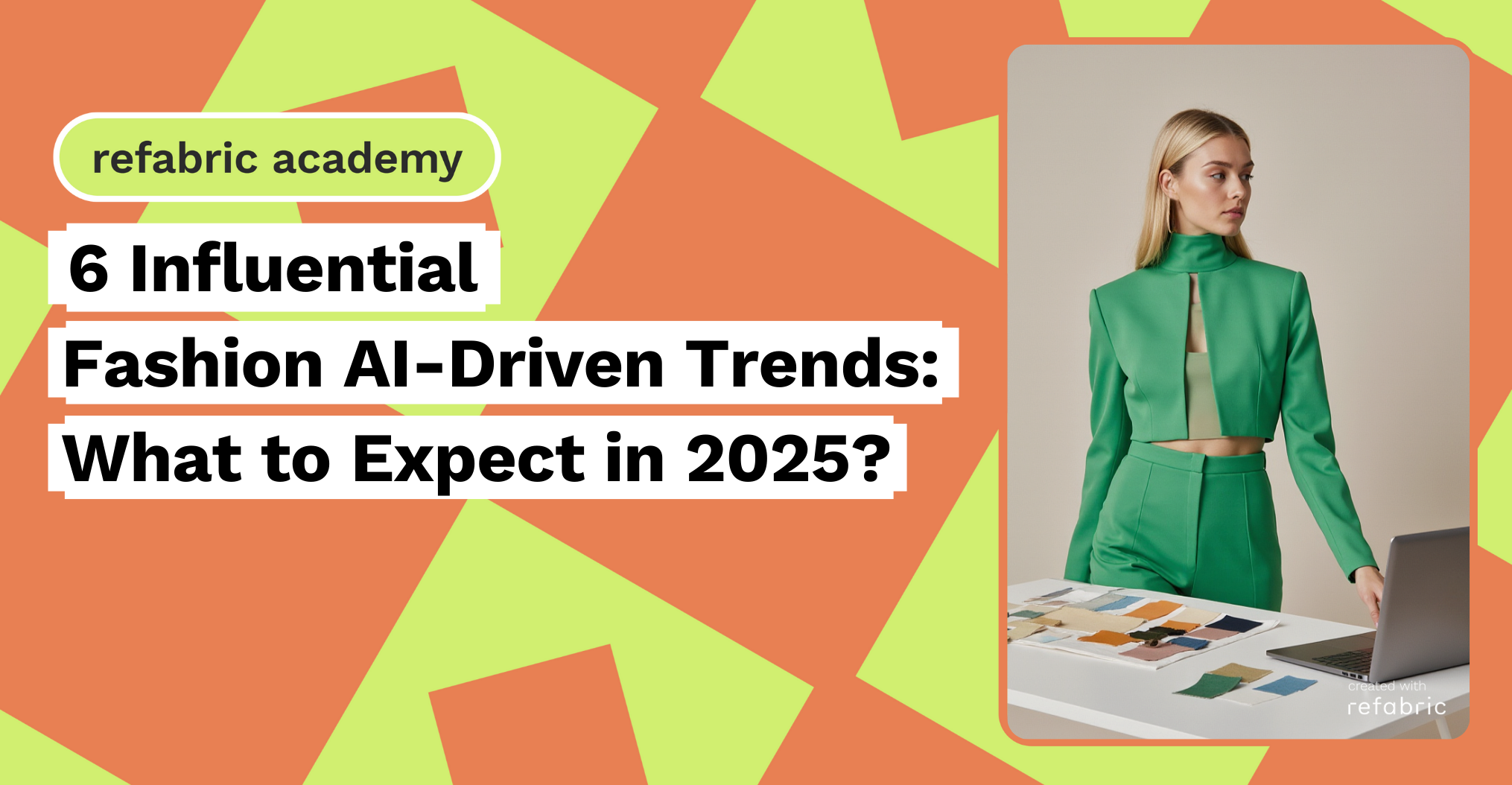The fashion industry is undergoing a revolution, with fashion AI technologies playing a pivotal role in reshaping how we experience and consume fashion. From personalized styling and sustainability efforts to trend forecasting and production optimization, fashion AI is transforming every facet of the industry. By 2025, we can expect even greater innovations, as brands and designers embrace fashion AI to address challenges and elevate creativity. Let’s delve into the key AI-driven fashion trends set to define 2025.
1. Hyper-Personalized Styling and Recommendations
One of the most exciting applications of fashion AI lies in its ability to deliver hyper-personalized experiences. By analyzing data such as browsing history, social media activity, purchase behavior, and even body measurements, AI-powered tools can provide styling recommendations tailored to individual tastes.
In 2025, this personalization will become even more advanced. Virtual stylists powered by AI will curate entire wardrobes, suggesting items that match not only a user’s preferences but also their lifestyle and upcoming events. Enhanced virtual try-on technology, backed by machine learning, will allow customers to visualize how outfits will look and fit on their bodies before making a purchase, reducing the likelihood of returns.
2. AI-Driven Sustainability
Sustainability remains one of the fashion industry’s most pressing challenges, and fashion AI is proving to be a game-changer in this space. By 2025, AI-powered systems will help brands significantly reduce waste and carbon emissions throughout the supply chain.
For example, AI can optimize fabric usage during production, ensuring minimal waste. Generative AI tools, like those offered by Refabric, enable designers to experiment with sustainable materials and create designs virtually, eliminating the need for physical sampling. Fashion AI will also assist in recycling and upcycling initiatives by analyzing discarded garments and suggesting ways to repurpose them creatively.
Moreover, consumers will benefit from transparency in sustainability. AI-driven platforms will provide detailed information about the environmental impact of products, empowering shoppers to make more responsible choices.
3. Advanced Trend Forecasting
Fashion has always relied on trend forecasting, but AI is taking it to a whole new level. By analyzing massive amounts of data, from social media and fashion shows to global cultural shifts, AI can predict emerging trends with incredible accuracy.
In 2025, we can expect AI to forecast trends not just on a global scale but also for hyper-local markets. This will enable brands to cater to niche audiences with precision. Additionally, AI-generated trend predictions will help designers stay ahead of the curve, creating collections that resonate with consumers’ desires before they even realize what they want.
4. Virtual and AI-Enhanced Fashion
As the Metaverse continues to grow, AI-driven virtual fashion will become increasingly mainstream. By 2025, digital clothing and accessories, often created using fashion AI, will be widely embraced for virtual worlds, gaming, and social media avatars.
Fashion AI will also enhance augmented reality (AR) experiences, allowing customers to try on virtual garments and mix-and-match outfits in immersive environments. This innovation will not only elevate e-commerce but also reduce the need for physical inventory, promoting sustainability.
5. Waste Reduction Through Fashion AI
Fashion AI is making significant strides in waste reduction, addressing one of the industry’s most critical challenges. Algorithms applied in AI improve demand prediction, helping brands create only the inventory they need, reducing overproduction and unsold stock.
AI-powered systems are revolutionizing textile waste management by sorting discarded materials for recycling with precision. This technology ensures that resources are reused to their maximum potential, contributing to a circular lifecycle. Furthermore, AI aids in designing products with recyclability in mind, ensuring garments can be repurposed after their first use.
By 2025, AI’s role in waste reduction will expect to help create a more efficient and sustainable fashion industry, transforming how brands approach production and material usage.
6. Circular Fashion and Resale Initiatives
The concept of circular fashion is gaining momentum, focusing on reducing, reusing, and recycling. Fashion AI is at the heart of these initiatives, tracking garments from production to disposal and identifying opportunities for repair, resale, or recycling.
AI-powered platforms are also making resale easier by connecting buyers and sellers and assessing the condition of pre-owned items. This builds trust and encourages consumers to participate in sustainable shopping. Tools like these not only extend the lifespan of garments but also contribute to the growth of the circular economy.
By 2025, brands will increasingly embrace circular fashion to reduce waste and align with consumers’ growing demand for sustainability. With the help of AI, the resale market will flourish, making sustainable shopping a mainstream choice for more people.
As we approach 2025, fashion AI is poised to reshape the industry in profound ways. From hyper-personalized styling and sustainable solutions to advanced trend forecasting and circular fashion initiatives, AI is driving innovation while addressing some of the industry’s most pressing challenges.
With tools like Refabric leading the charge, designers, brands, and consumers alike can look forward to a future where creativity, efficiency, and sustainability coexist harmoniously. The fashion landscape is evolving, and AI is at the heart of this transformation—ushering in an era of smarter, greener, and more inclusive fashion.
